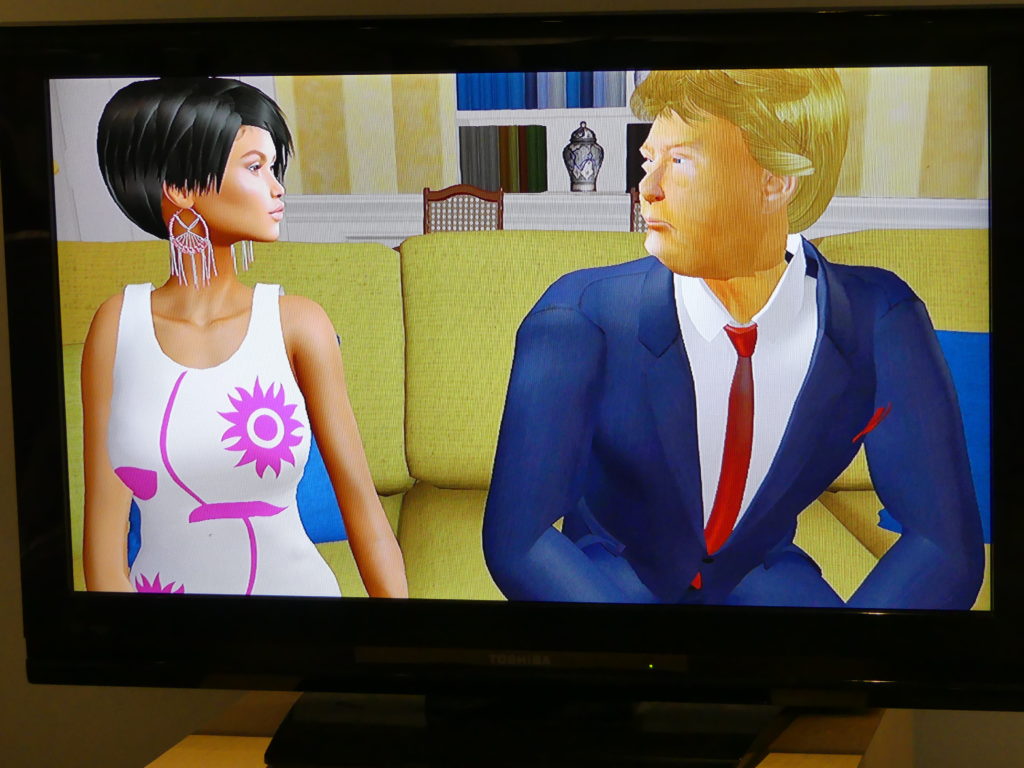Western New York’s New Onöhsagwëde’ Cultural Center
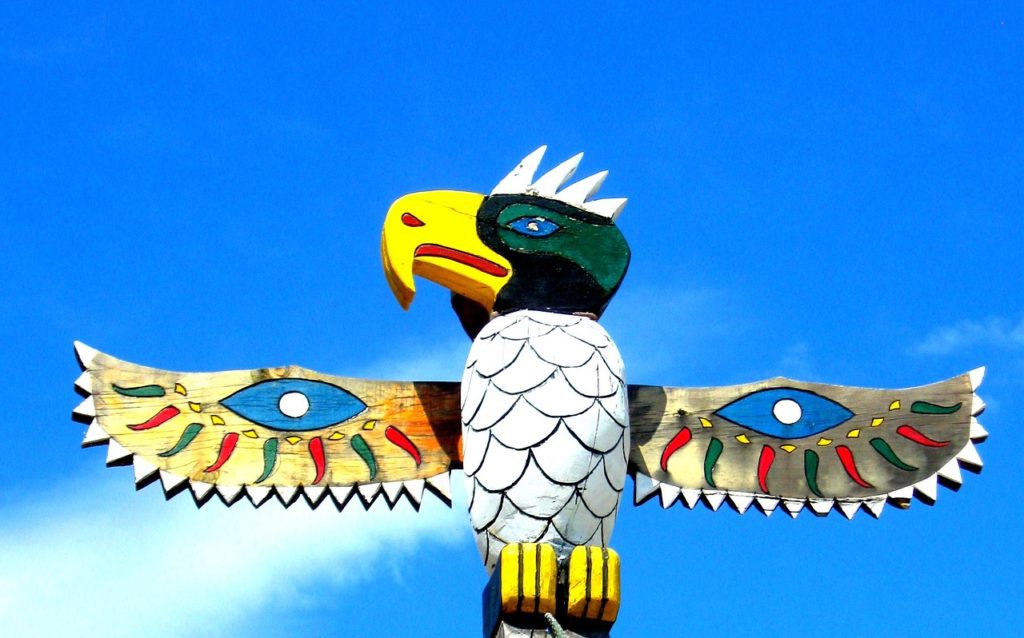
The Enchanted Mountains of Cattaraugus County, New York are the homeland of The Seneca Nation, one of six Native American tribes that formed a confederacy in the region. The largest of the six tribes, The Seneca, who lived in the Western part of the Confederacy, called themselves the Onöndowa’ga,’ or “Keepers of the Western Door,” because they controlled the land foreigners had to cross to gain access to the Confederacy. To document and preserve their heritage, the Seneca recently opened Onöhsagwë:de’ Cultural Center in Western New York Salamanca, New York.
Last month, I met with David L. George-Shongo, Jr., Acting Director of the Center for an in-depth tour. The 33,000-sq. ft. building is a combination of interactive museum, cultural center, educational facility, living cultural village, and performance space with more than 85,000 artifacts on display.

A Traditional Welcoming Ceremony
George-Shongo welcomed us to the center, where he performed the traditional welcoming ceremony, in a special room designated for that purpose, using a feather to cleanse our auras. The room is circular and the walls and floor are white, representing peace. Its overhead dome was inscribed with “Welcome” in many different languages.
The ceremony was meant to clear visitors’ minds and make them ready to be enlightened about Seneca culture. It also reminds us we are all included. George-Shongo waved a feather a few inches away from us from head to foot as he chanted a Seneca phrase. He explained the complexity of his relationship to the Seneca language with a metaphor. “When I talk English, it’s like watching a 2-D movie and when I speak Indian, it’s like a 3-D movie.”
After finishing in front, he signaled us to turn and chanted and waved the feather in the same way down our back. All circles are done counterclockwise in Seneca culture because it represents life. Turning clockwise represents moving toward death.
Traditional Dances
As we finished, chanting and drums drew us towards the Center’s performance space, where a stone balcony overlooks the new amphitheater. A small group was performing ceremonial dances, accompanied with chants in the Seneca language.
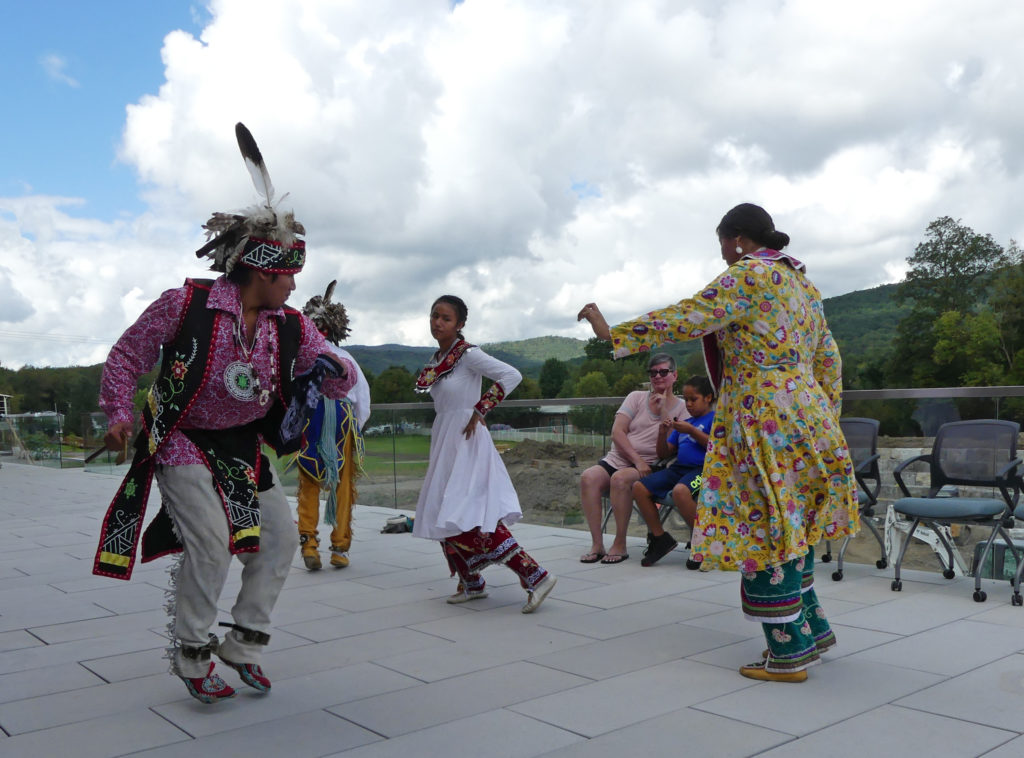
Alan Dowdy, who chanted and played a small hand drum, led the native dance troop. As he drummed, two men and two women in native costume moved their feet as if magically attuned to the drumbeat. The sound of their feet hitting the floor was an extension of the instrument, a part of the music, as was the chant.
The troop performed several dances, two of which were performed by only one gender. They included: the Woman’s Creation Dance, where women reenact the tribal origin story and the Warrior Dance, performed only by men. Dowdy said that after the Seneca formed the Confederacy, though there was no longer actual warfare, they continued to perform the dance to preserve the traditions of their ancestors.
Dancing is an important part of the culture, according to Dowdy. “My family was always dancing. I could hear it in the womb. When I came out I was already bouncing around.” He also explained that while many of the songs are passed down through the generations, they add new songs too. “We travel around and share our way of thinking and our songs. There are gatherings of other nations and we all share.”

Traditional Food
After watching several native dances, we enjoyed traditional Seneca food, which can be arranged for special tours. Our feast included: white corn combo soup with corn, beans and potatoes in a clear broth; three sisters salad composed of corn, beans, squash; maple squash bake; maple roasted white cornbread. George-Shongo explained that according to Seneca tradition, a guest is required to take three bites or it is considered rude. We all took many more.
The museum part of the Center tells the history of the Seneca, including the creation of the earth to present day. Before people were on this earth, the chief of the Sky World lived with this wife and child. After a tree was uprooted, leaving a hole into endless darkness, the chief’s wife, Sky Woman, fell through the hole. As she fell, a flock of herons caught her and carried her to the water world below and placed her on the back of a turtle.
Muskrat came to the surface with some mud in its paws. Sky Woman took the mud and wrapped it around a piece of root she had grasped as she fell through the hole. She placed it on turtle’s back. Turtle said as the land expanded he would also. Sky Woman walked counterclockwise around creating ridges and formed an island in the sea where she built a small lodge for herself. The rest of the story explains how humans and animals were created thereafter.
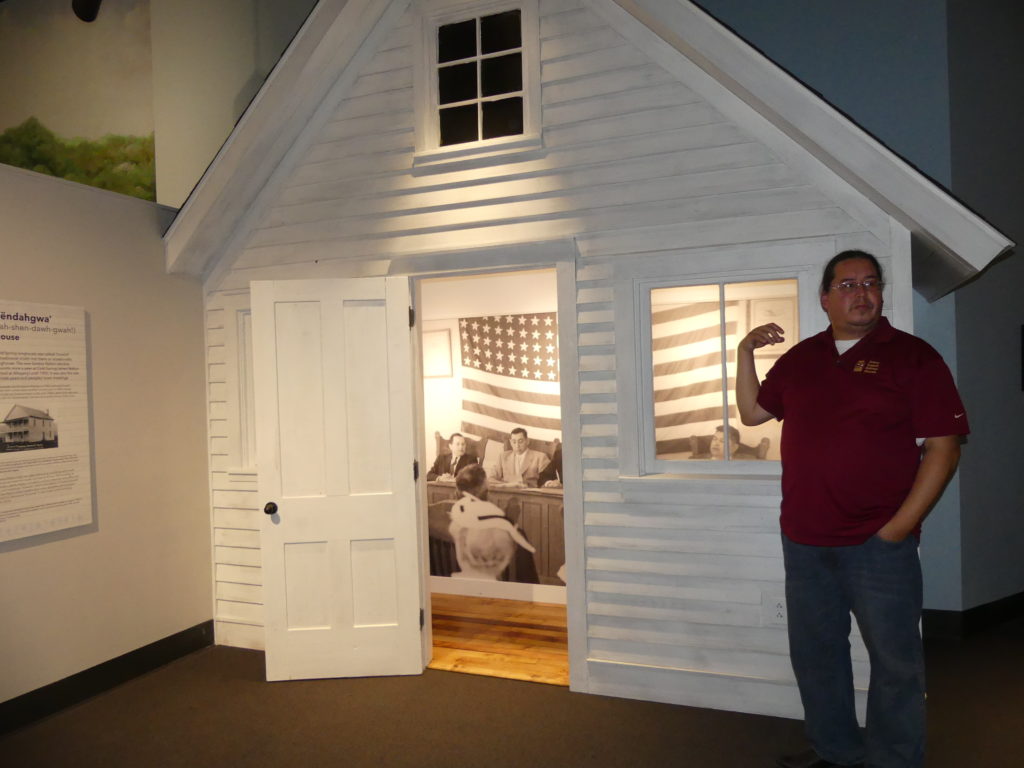
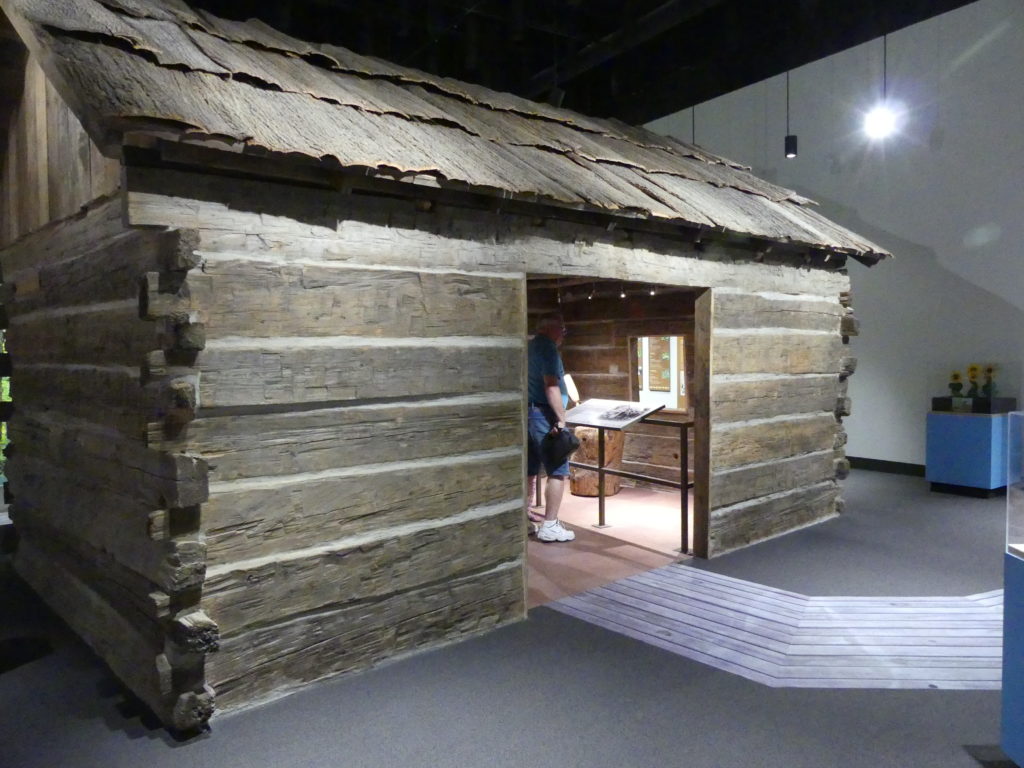
Informational Exhibits
The museum is filled with both interactive and informational exhibits. Many discuss events that American history books do not teach. One exhibit shows that even in modern times, America continued to break treaties with the Seneca Nation. The Kinzua Dam exhibit tells how the U.S. government removed at least 130 Seneca families from 10,000 acres of their reservation in violation of a treaty signed by George Washington. President Eisenhower and then his successor, President Kennedy also chose to violate the same treaty using the catch-all explanation that it was for, “national security” purposes.
The final exhibit in the museum is an animated film telling, from a future perspective, how the original Seneca constitution, The Sacred Tree of Peace, which was used as a model for the U.S. Constitution, came to be. The film focuses on a futuristic “Dreamer, ” who remembers the story of Peacemaker, who made the Iroquois tribes become peaceful under their constitution. Peacemaker had the warriors bury their weapons beneath a giant tree. He promised that if peace was threatened in a future time, he would return for the weapons to protect them.
In the film, which is shown on a large TV, when Dreamer dreams that present day tribal leaders are concerned and they call out for Peacemaker to return, he returns as a woman. She calls upon all the leaders of Europe and the rest of the world to lay down their arms and become peaceful. Lastly, she calls upon the most difficult one, “an orange haired leader” who seems bound to cause a war. She offers him what he most desires to become peaceful, a large Twitter following.
The film represents an important concept—the Seneca people are real, present day people, not just the ancestors who lived in the past. The new Onöhsagwë:de’ Cultural Center will preserve the Seneca culture, past and present for future generations.
Book Your Stay Now in Seneca Nation
Use the interactive map below to search, compare and book hotels & rentals at the best prices that are sourced from a variety of platforms including Booking.com, Hotels.com, Expedia, Vrbo, and more. You can move the map to search for accommodations in other areas and also use the filter to find restaurants, purchase tickets for tours and attractions, and locate interesting points of interest!
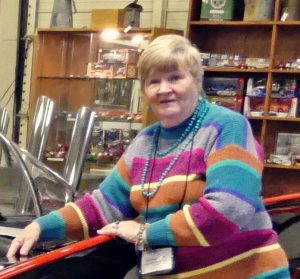
Kathleen Walls, former reporter for Union Sentinel in Blairsville, GA, is publisher/writer for American Roads and Global Highways. She is the author of several travel books including Georgia’s Ghostly Getaways, Finding Florida’s Phantoms, Hosts With Ghosts, and Wild About Florida series. Kathleen’s articles have appeared in Family Motor Coaching Association Magazine, Food Wine Travel Magazine, Weekender Extended, Travel World International, Tours4Mobile and others. She is a photographer with many of her original photographs appearing in her travel ezine, American Roads, as well as other publications. Her fiction includes Last Step, which was made into a feature movie of the same name by Forbes Productions, Kudzu, Under A Bloody Flag and Under A Black Flag.
PODCAST FEATURE
Listen to Kathleen’s interview talking about the American south.
